Pros and Cons of Shopify for 2022
Are you considering a few E-commerce platforms for your upcoming online store? You've heard of the well-known Shopify, but are unsure if your company would benefit from using it. After reading this in-depth review, you will have a solid understanding of what Shopify has to offer and be able to decide if it is a platform you can trust. Let's get started right away!
1. What is Shopify?
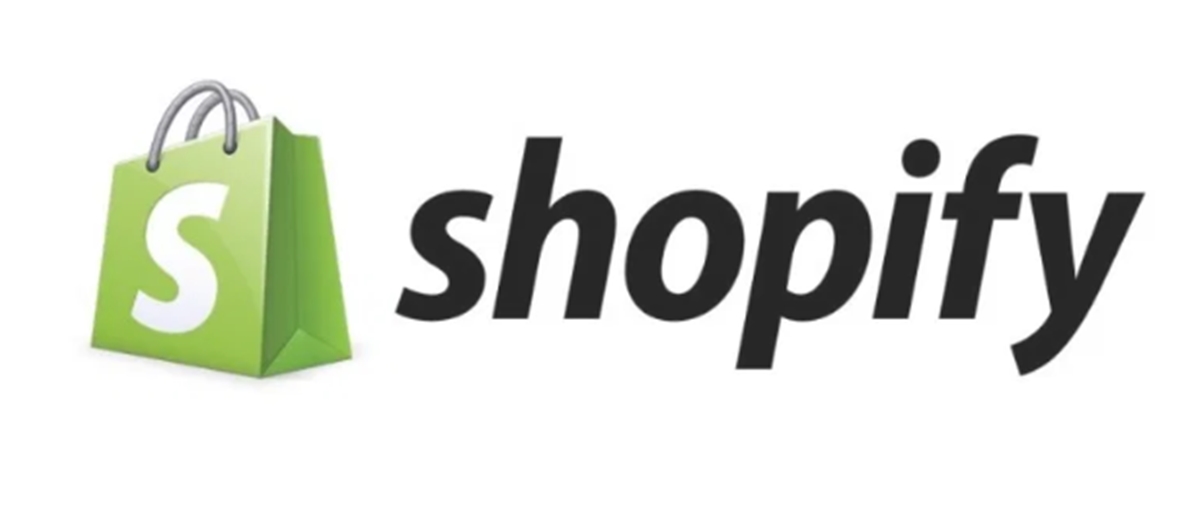
2. Shopify’s pricing:
- Shopify offers the following five pricing tiers:
- - 'Shopify Lite' - $9 per month
- - 'Basic Shopify' - $29 per month
- - 'Shopify' - $79 per month
- - 'Advanced Shopify' - $299 per month
- - 'Shopify Plus' - fees are negotiable, but in the region of $2000 per month.
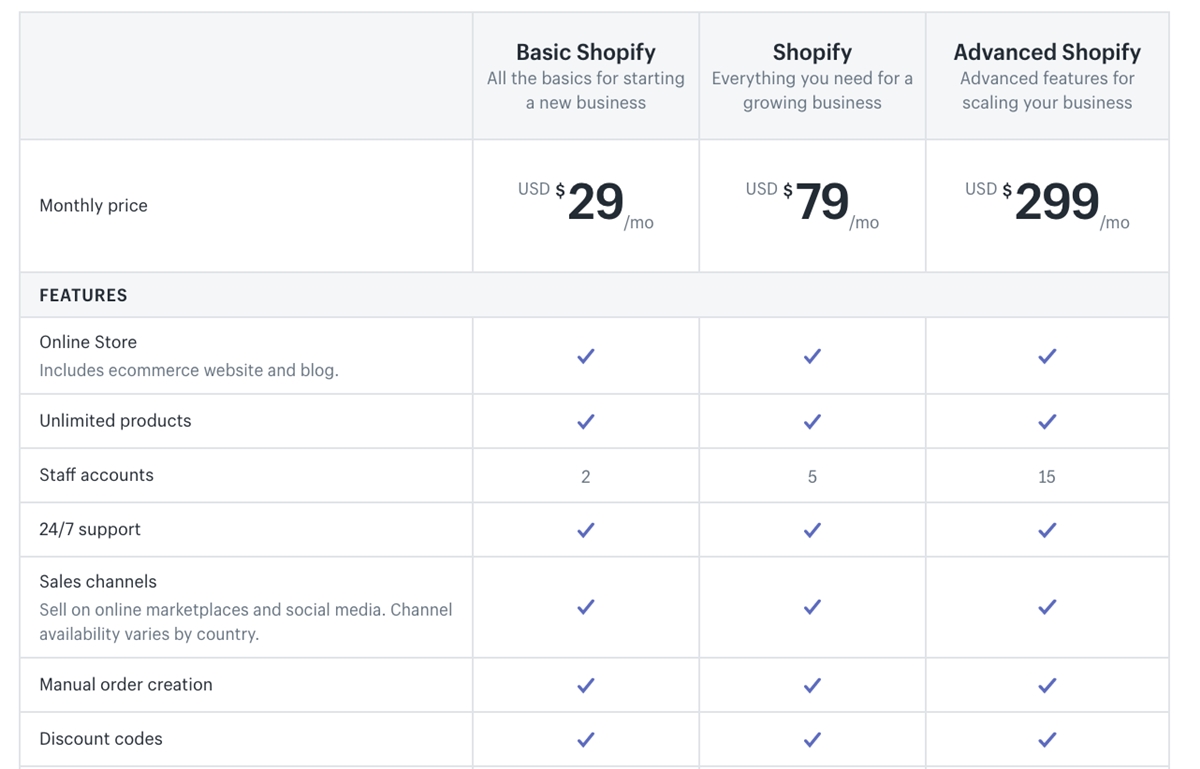
With its $9/month Shopify Lite starter plan, Shopify is one of the least expensive ways to start an online business. The great thing about this plan is that you can already sell an infinite amount of goods.
Having said that, the Lite version only offers the following features, preventing you from creating a website that is fully functional.
- - Sell via your Facebook Page
- - Use Shopify in a physical location to sell goods or manage inventory
- - Sell products on an existing website/blog with Shopify's button.
You have Basic Shopify, Shopify, Advanced Shopify, and Plus Shopify as your other pricing choices. Naturally, you can build a fully functional online store using these four plans. Shopify Plus is extremely expensive because it is made specifically for large companies. Many cutting-edge features are included at that price point, including dedicated SSL/IP addresses, API support, guaranteed server uptime, and sophisticated security measures.
3. Pros of Shopify
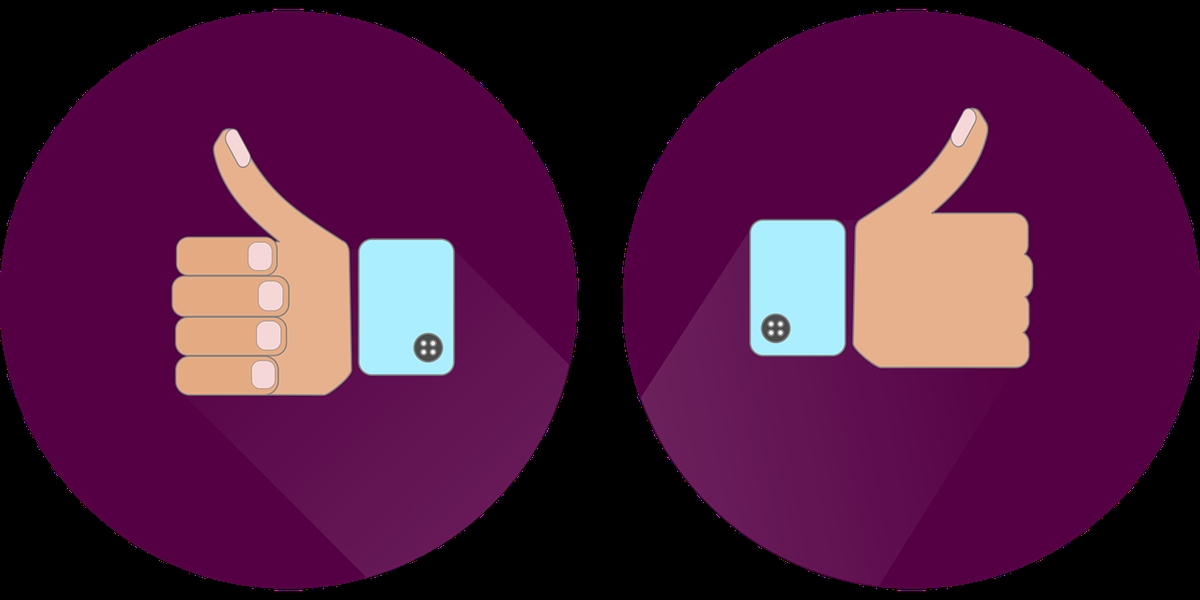
3.1. Sell products on multiple channels
- You can sell on various channels with Shopify to boost sales. The channels that Shopify supports and that make it simple to integrate products are listed below.
- - Facebook – Sell your Shopify products on your Facebook Fan Page.
- - Amazon – Connect your Shopify to Amazon Professional Seller.
- - Pinterest – Sell your products directly through pins.
- - Mobile Apps – Sell your Shopify products on apps you build.
- - POS system – Sell in person at retail locations.
Click here to learn more about these features.

3.2. Shopify’s Buy Button
You can include items from your store in your blog posts and on external websites by using the Buy Button feature. By eliminating the need to visit a different page to complete an order, it also makes buying a product easier.
A Buy button serves as a quick link to purchase your goods. You can use it on a website that isn't powered by Shopify, like a Wordpress blog (if you have one). This button allows you to check out without leaving the website and displays details like your product's image, description, and price. Every time you modify a product's details in your Shopify admin, the product details are also automatically updated.
Let's say you sell apparel and accessories for sun protection as an example. You have a blog post on Wordpress about the possibility of sunburn even on cloudy days, and you want to promote pertinent goods to address this issue right there in the content. When you implement the Buy Button on the website, a customer who reads the blog post can continue and purchase your sunscreen by clicking the Buy Button. Without leaving your blog post, the entire purchasing process can be finished.
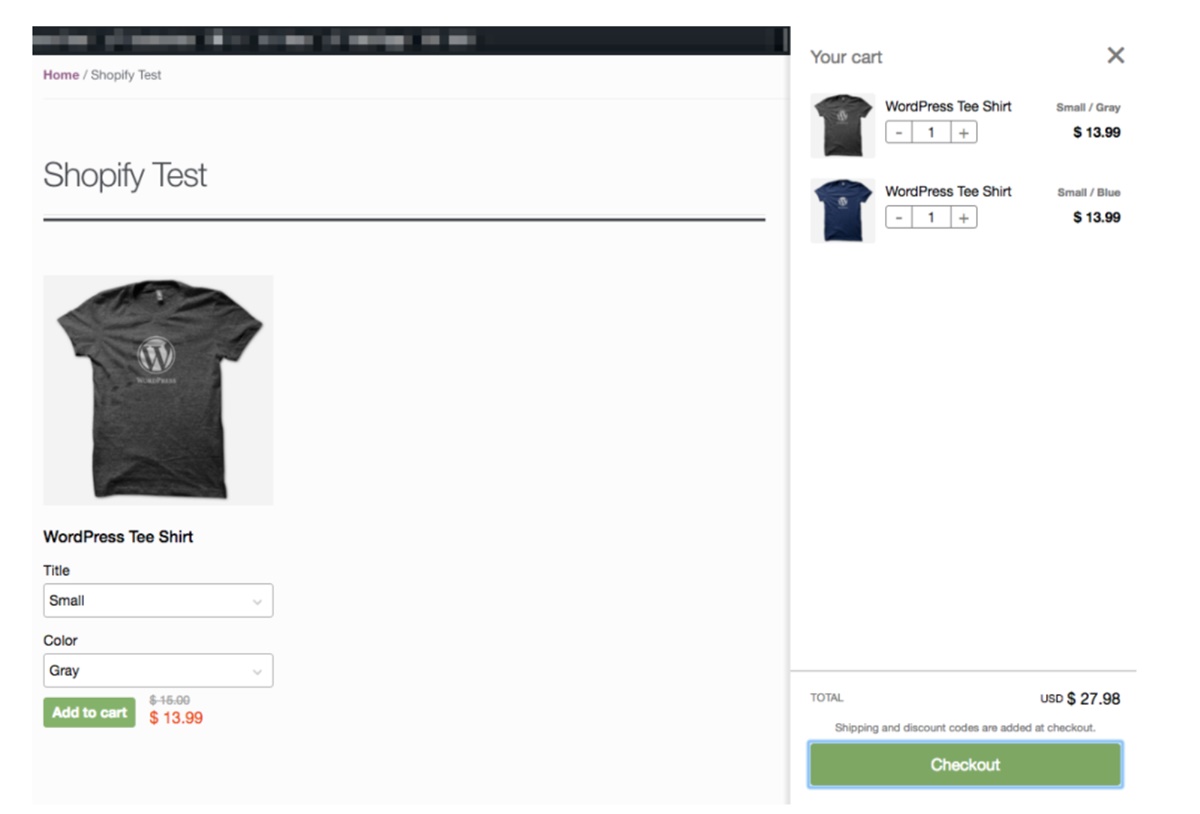
3.3. Support over 100 payment processors worldwide
Among the built-in payment options offered by Shopify are Paypal, Amazon Pay, and Apple Pay. Using Shopify Payment, which supports over 100 different payment processors globally and can handle multiple currencies, you can also make credit card payments.
Check out Shopify Payments here.
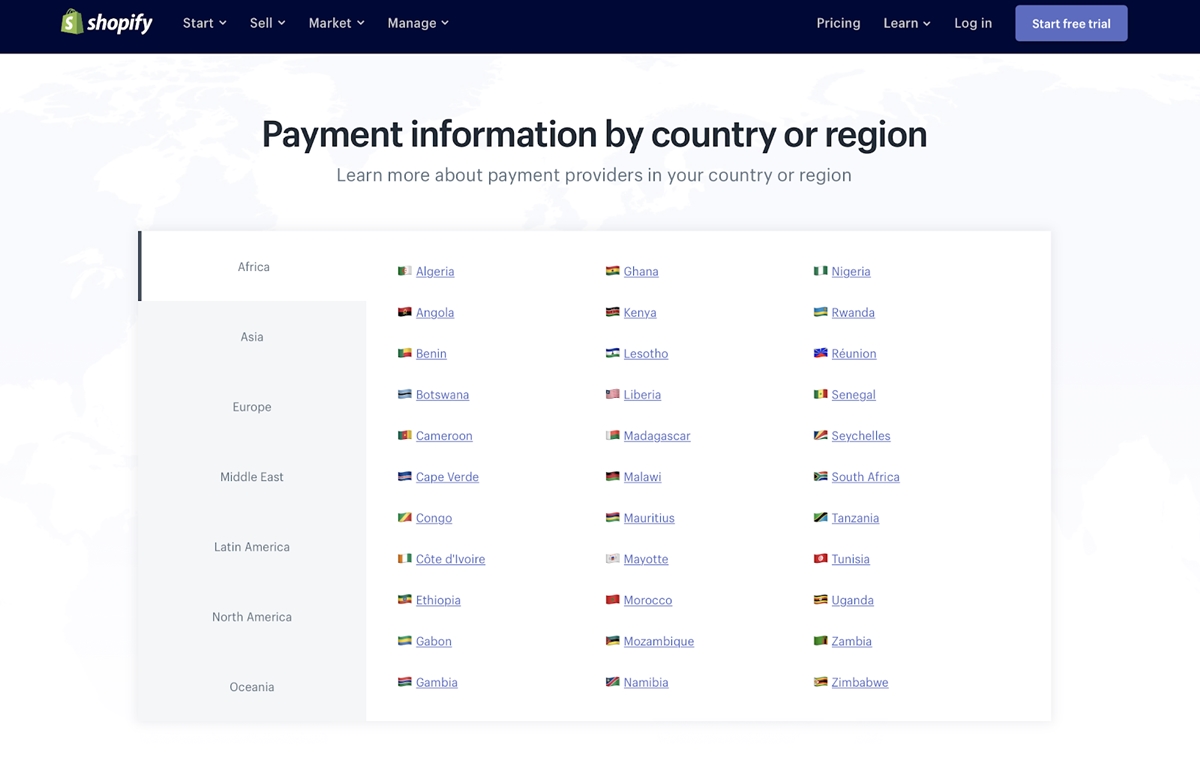
3.4. Excellent site performance
We all find it frustrating to wait in lines when we are shopping. The same goes for waiting for a website that loads too slowly. A website's visitors are more likely to abandon it if it loads too slowly or makes them wait at the checkout.
You don't want to lose any potential customers, I'm sure, which is why a good site's performance is crucial for any online store. To test Shopify's performance on BitCatcha, I built a free store, and the results were A+. That essentially means Shopify loads incredibly quickly!

Amazon calculated that even a one-second delay in website loading could cost them $1.6 billion in lost sales annually. You can take a cue from Amazon in this regard and keep your website responsive at all times.
3.5. Sell both digital and physical products
On Shopify, you can sell both physical and digital goods. Selling physical products is obvious, but adding digital products to your store is made possible by Shopify's apps. These digital products can be sent via email or made available for download from an online storage space.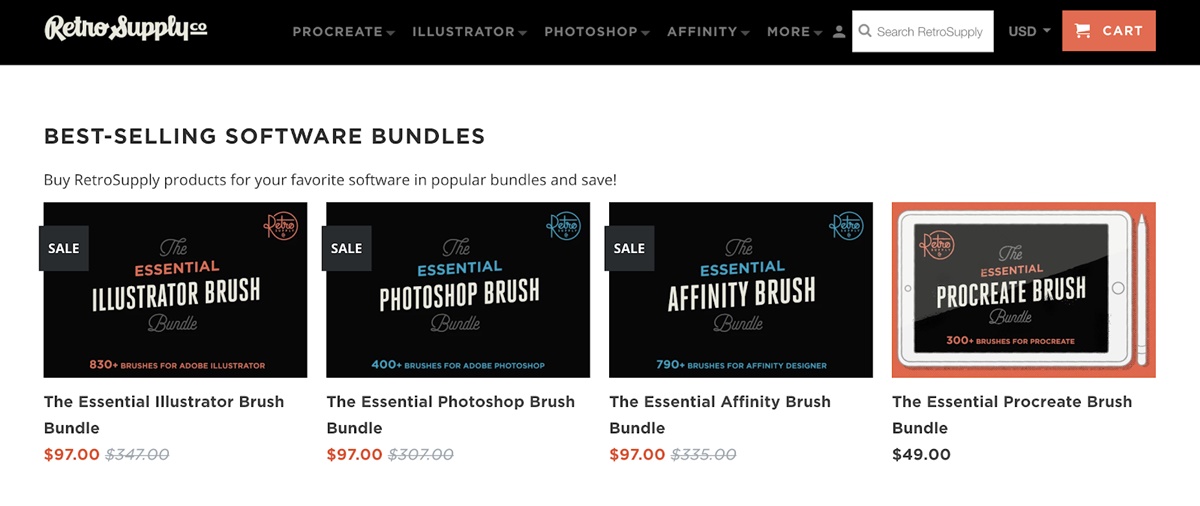
3.6. Connect your store with POS

Do you currently operate a physical business and want to expand it online? That can be handled by Shopify's POS (Post of Sale) system. Your physical store and online store can be integrated using Shopify's POS. Then both your physical store and your online store will have access to your data. You can manage your inventory, sales, customer information, etc. from both online and offline on a single platform thanks to the POS system.
If you purchase Shopify POS, you will receive a full POS system from Shopify along with its hardware, which includes a Star Micronics receipt printer, a Swipe-powered card reader, APG cash drawers, and a Socket Mobile barcode scanner.
3.7. Huge self-help library
You can use the extensive library of self-help materials that Shopify offers you to learn about everything the platform has to offer. This library contains thorough and simple-to-follow information, including setup how-tos and definitions for technical terms, making it useful for both novices and experts. Here, you can access Shopify's help section.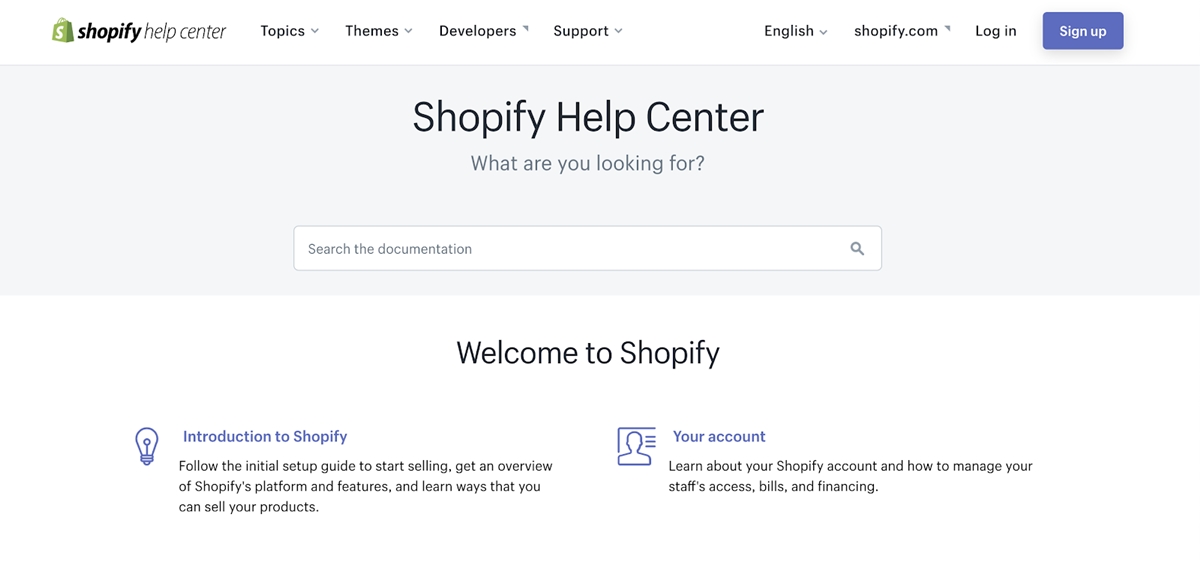
3.8. Rich app store
In addition to the features that come standard with each Shopify plan, you can visit its app market to find helpful apps (free or paid) that will enhance the functionality of your store. Shopify is now among the most innovative eCommerce platforms thanks to its sizable app store. To bolster your store, you have access to over 1,200 apps with a variety of features, including inventory, marketing, and customer service.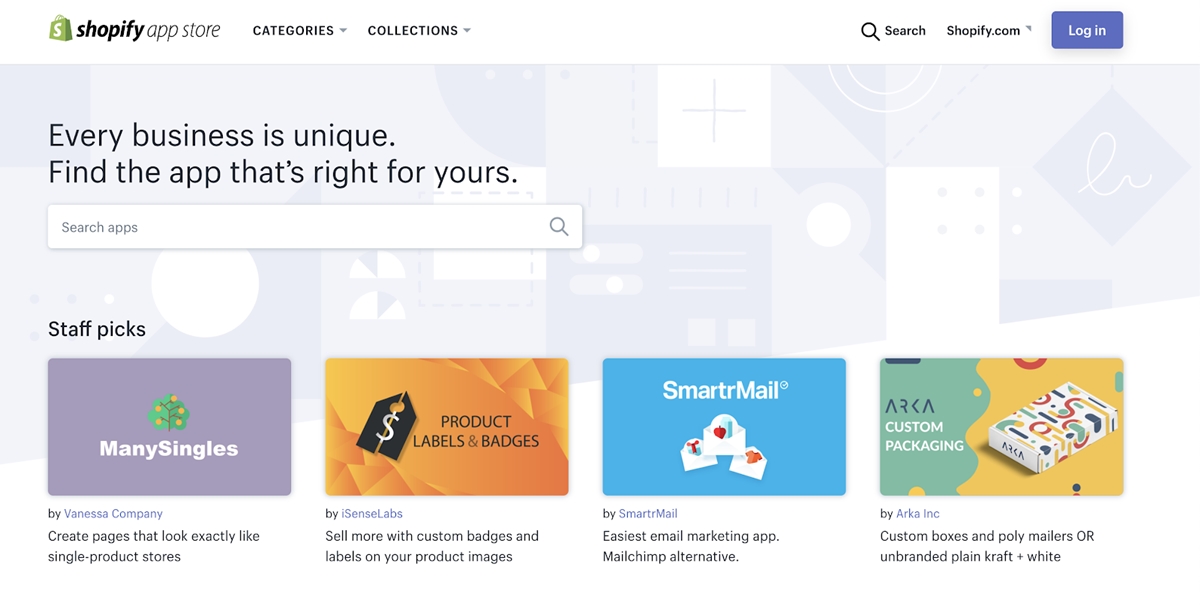
3.9. Boost sales with Shopify Abandonment Cart Recovery:
There will be instances where customers selected products but, for whatever reason—perhaps they were called away or they weren't ready—did not finish the checkout process. The solution to this issue is Shopify Abandonment Cart Recovery, which enables you to contact these customers again by emailing them to remind them of their abandoned carts.
Shopify recently made this feature available for all plans, which is nice (if you're on 9GAG that'd sound familiar ;). Previously, it was only available for the higher plans. The unfinished checkouts will be saved as "abandoned check-outs" with the contact information that customers have provided. You can customize the time intervals at which you want to send these abandoned cart reminders, in addition to sending them.
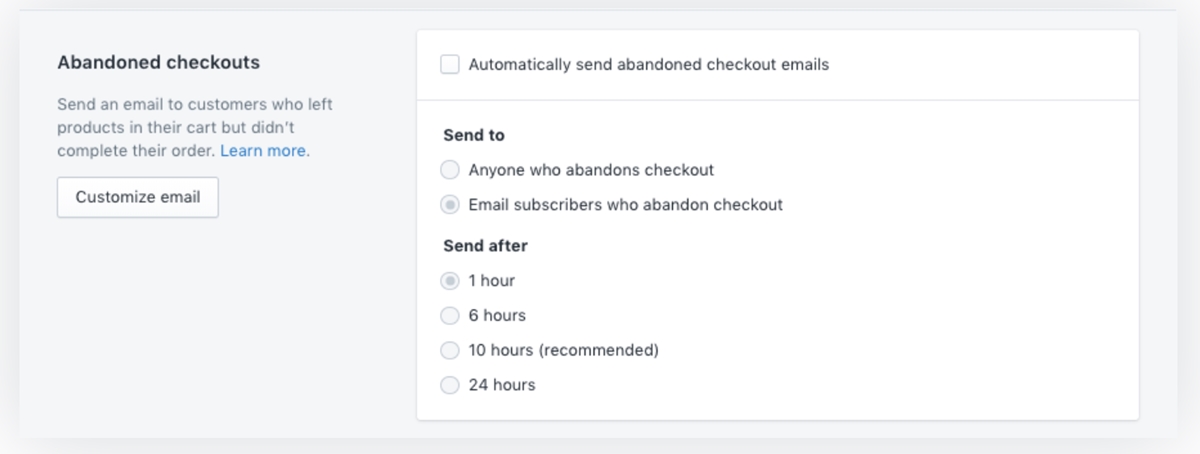
3.10. Huge themes store
The majority of consumers' purchasing decisions are, in fact, greatly influenced by the way an online store appears and by how they feel when they first land on your website. How many times have you left a website quickly because it didn't look good and made you doubt its reliability? I've done that so frequently that I've stopped keeping track.
A potential customer can decide in those few seconds whether they want to stay and browse your website more or leave and visit another in just a few clicks. We make decisions of this kind every day, in a split second. Therefore, you must either create a website that can pique visitors' interest and attention so that you can have a chance to sell, or you will waste the time and energy you put into attracting them to your store (and money too if you run ads).
Shopify can assist you with that because its themes are made with credibility and trust in mind. They were created by qualified designers to help keep customers interested in your establishment and want to stay a little while longer to see if you can be of any assistance to them.
There are a ton of themes available, both free and paid, organized according to industries. However, since your store theme is so crucial, I would advise choosing paid themes instead of free ones.
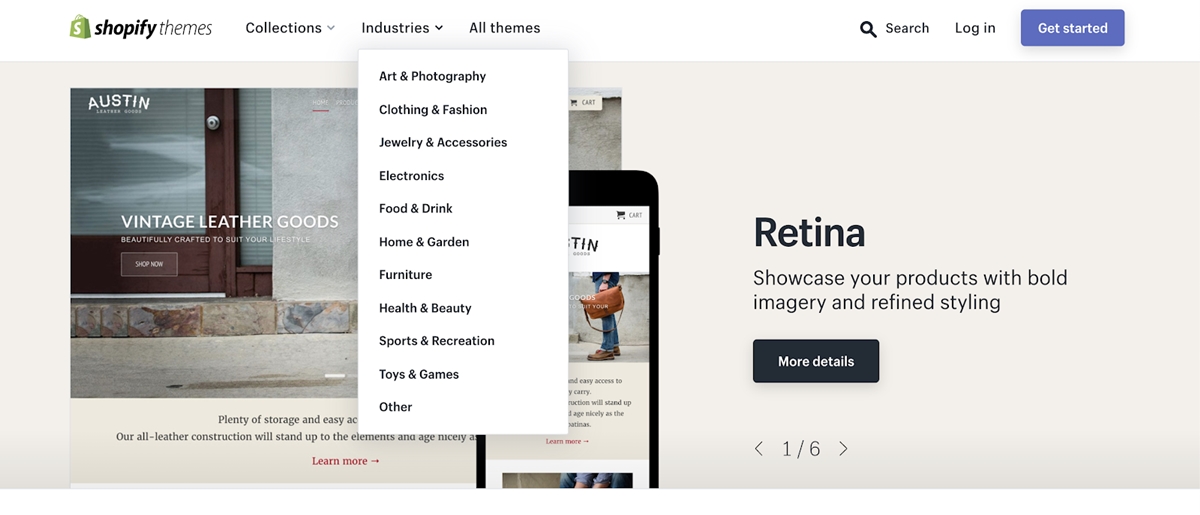
3.11. User-friendly interface
Shopify is simply simple to use. Ecommerce builders frequently struggle to balance strength and usability, but Shopify has excelled in this crucial area. Even for complete beginners, setting up your store with Shopify is simple thanks to its user-friendly design.
Don't misunderstand me; this does not imply that your website will be live in five minutes. The platform ensures that a significant amount of power is packed into its backend. But Shopify will guide you through the setup procedure with questions and prompts, and it has succeeded in making its editor easy to use.
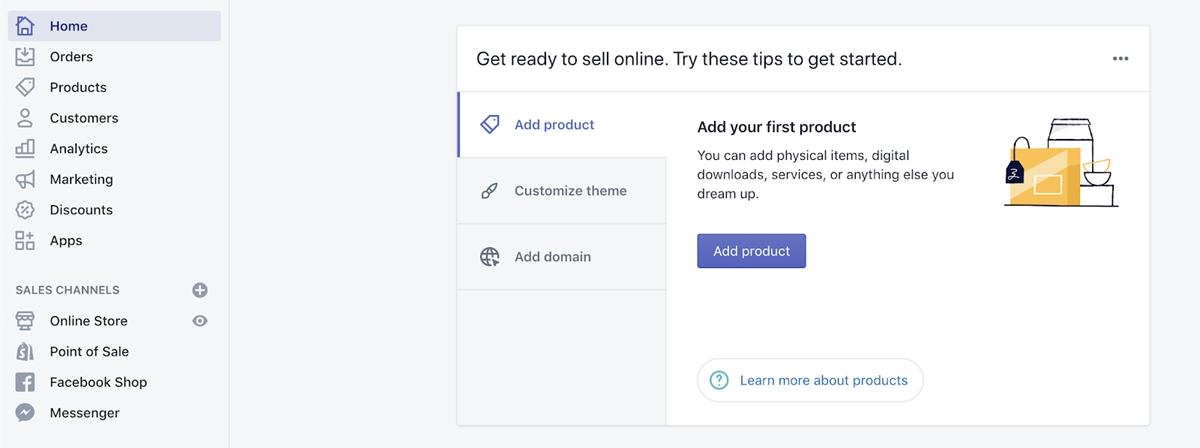
5. Cons of Shopify
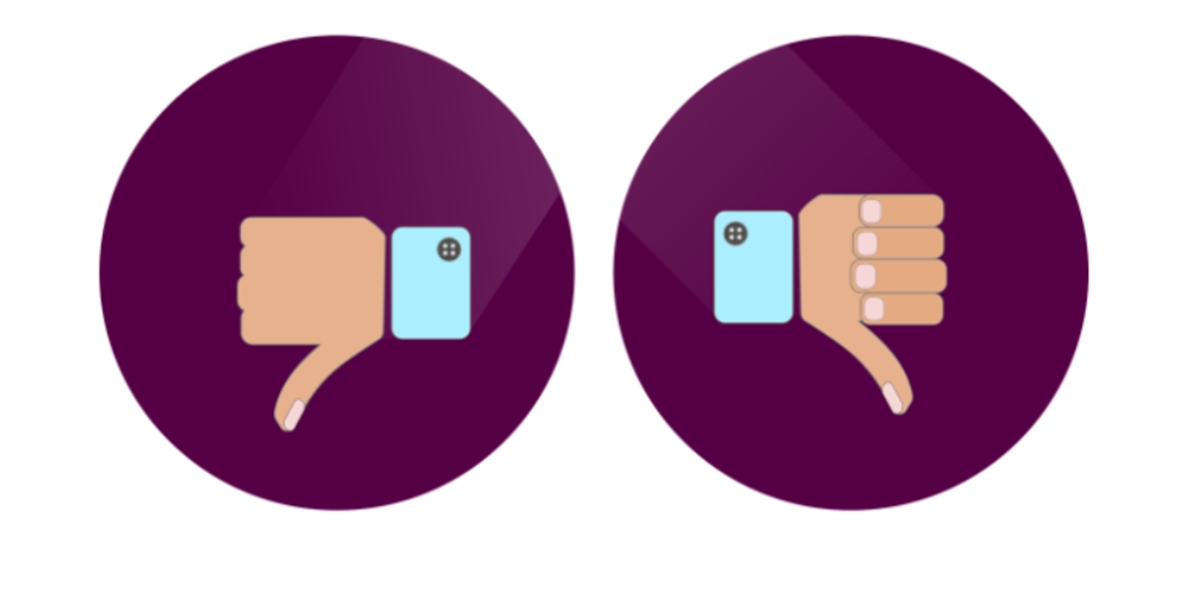
5.1. Its themes coded in Liquid
Shopify uses the self-developed PHP language "Liquid" to build its platform. Their entire store's themes are coded in this language. This makes it more difficult for you to modify themes unless you are proficient in Liquid coding or willing to pay a developer who is.
It's easy to learn the language, according to developer reviews on Shopify, but if you've never written a line of code before, I wouldn't advise you to tinker with the code. Fixing it will be very expensive. Instead of doing any coding yourself, you can get support from the theme's creator by getting in touch with them.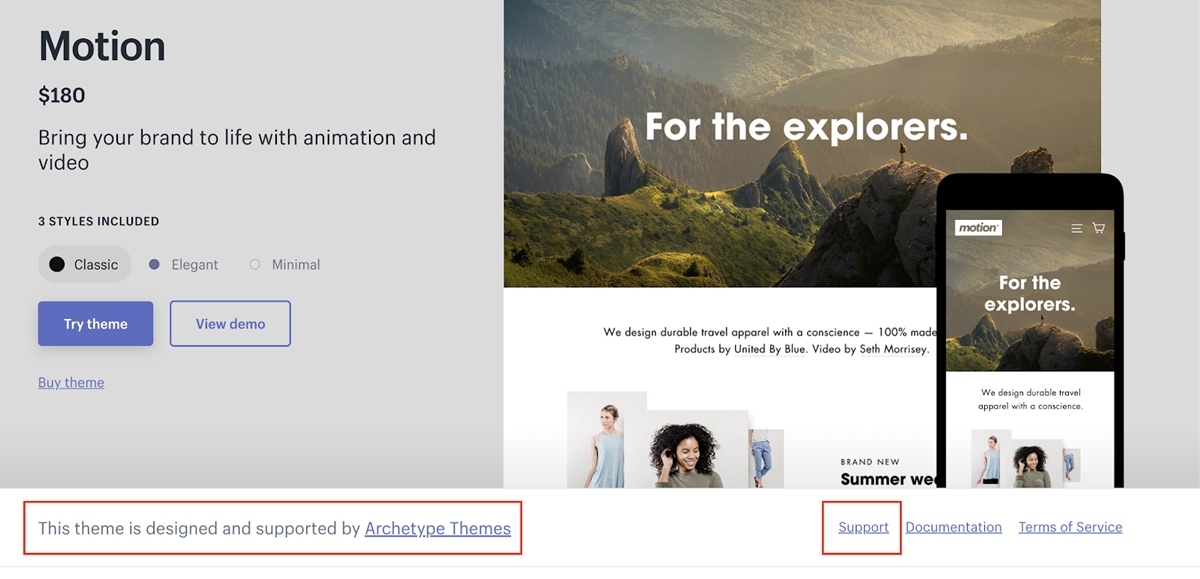
5.2. Advanced features cost a lot more
You only get the bare minimum features with the Shopify Basic plan to run an online store. This strategy is likely for those who want to test their ideas out before investing money in the company. Only more expensive plans come with advanced features like fraud analysis, reports, gift cards, or real-time shipping costs.
5.3. Lots of apps are useful but pricey
There are many helpful add-ons for your store available on the vast Shopify app market, but many of them are not free and may even be quite expensive. For instance, the Exit Offers app is $9.99 per month, Intuit QuickBooks is $29.99 per month, and the RetargetApp is an additional $19 per month. With these apps, you will undoubtedly have great features, but using a lot of them will quickly drive up your overall costs. Having said that, it might be worthwhile to spend money on apps if you discover ones that can reduce your stress levels or streamline your workflow. The moral of the story is that while apps are great, you should only choose the ones that you can't live without.
6. Shopify’s Rating Details

7. When you should and should not use Shopify?
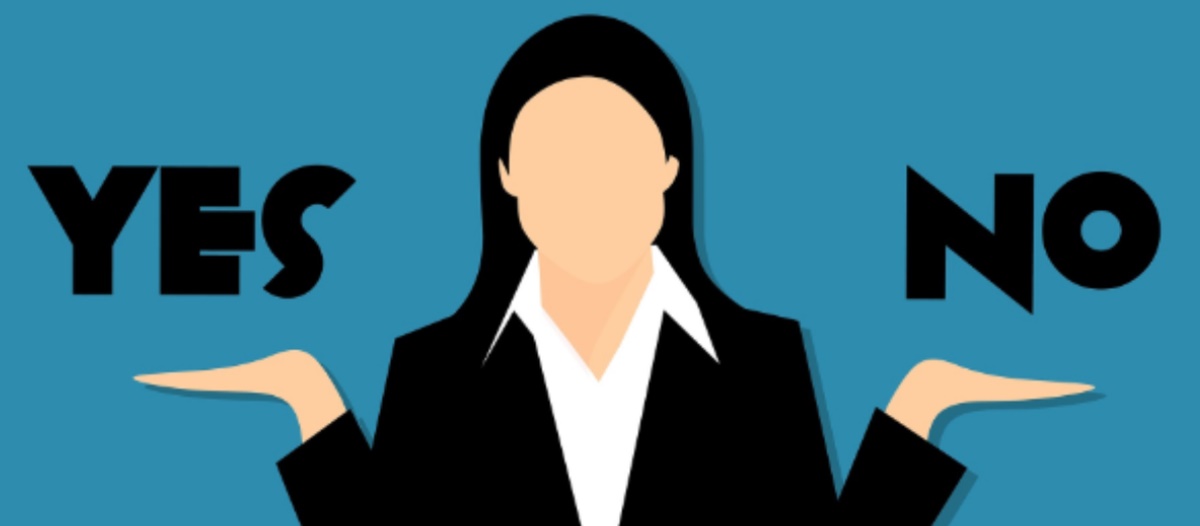
7.1. When you should use Shopify?
- You want to sell physical or digital products
- You require customer logins
- You want to book deliveries without having to work with a third-party carrier
- You want to seamlessly sell on multiple channels
- You don’t know or want to get involved in programming
- You need a store with lots of functionality
- You need a reliable Ecommerce host
7.2. When you should not use Shopify?
- If you just want a blog, not a selling channel
- If you want more features at the entry-level plan (then you should go for Bigcommerce).
Final words:
I hope this review has provided you with a thorough overview of Shopify's features. Shopify is a fantastic option for experts and beginners alike. It makes online selling much more accessible for those without programming experience and gives you a ton of tools to make this process as simple as possible. Although it is not the most affordable option, their ecosystem and support will ease a lot of the hassles associated with operating an online store.

Comments
Post a Comment